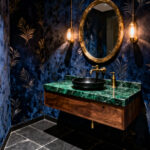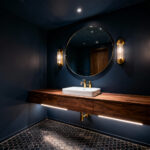In minimalist design, where simplicity reigns supreme, incorporating texture is a delicate balance – a dance between restraint and depth, clean lines, and organic warmth. Imagine entering your sanctuary, a space that exudes a sense of calm and serenity yet beckons you to linger with its inviting textures and layered elements.
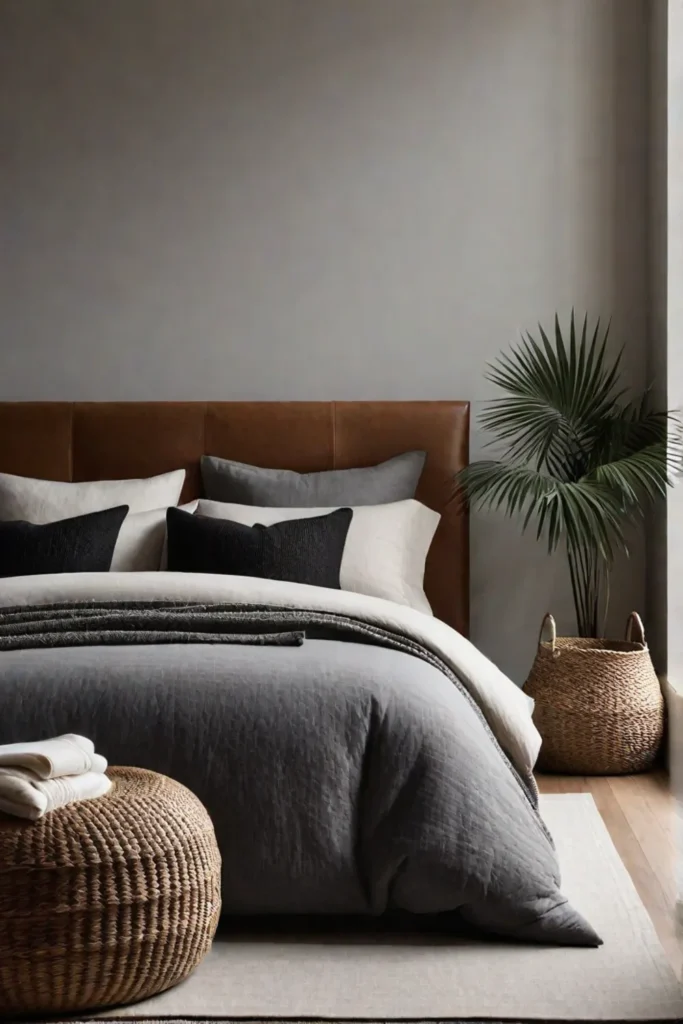
This is the power of texture in a minimalist bedroom, a harmonious fusion of simplicity and character that elevates the space from a mere sleeping quarters to a true oasis of tranquility. Join me as we embark on a journey to master the art of texture, unlocking the secrets to creating a minimalist haven that soothes the soul while captivating the senses.
Embrace the Power of Natural Textures
What better way to infuse your minimalist bedroom with warmth and authenticity than by embracing the beauty of natural textures? These organic elements instantly connect to the great outdoors, promoting a sense of calm and serenity in your sanctuary.
Wood: A Timeless Choice
Ah, the rich allure of wood! From rustic, distressed finishes that evoke a cozy cabin vibe to sleek, modern treatments that exude sophistication, wood is a versatile material that seamlessly blends with your minimalist aesthetic. Consider a stunning wooden headboard or a platform bed as a statement piece, instantly elevating the space with its timeless charm.
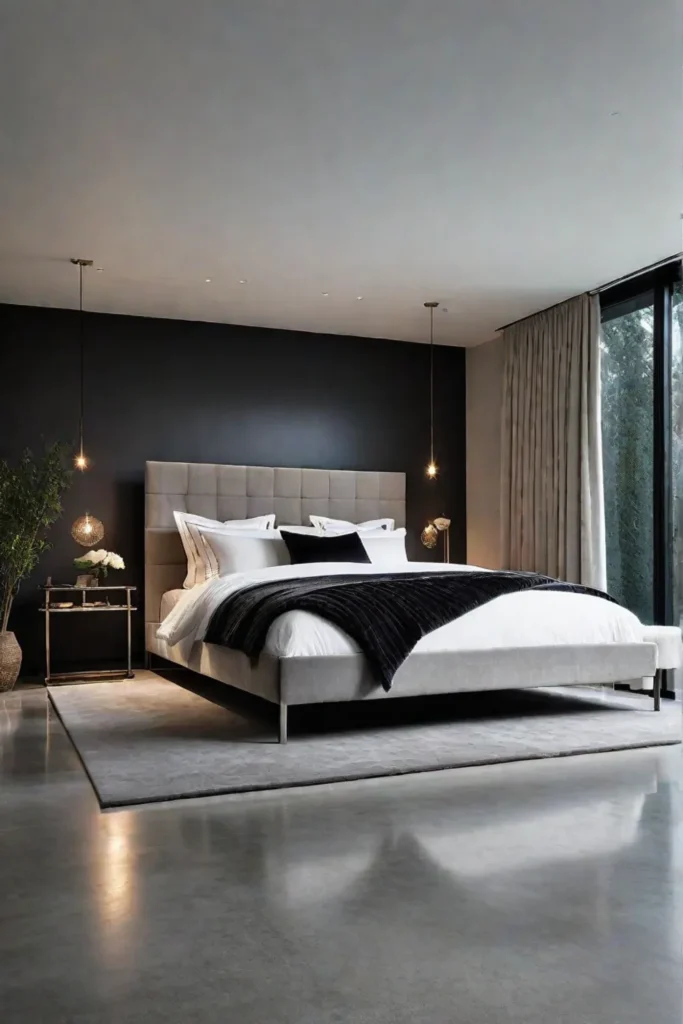
Stone Accents: Grounding Your Space
Stone textures offer a captivating range of possibilities, from the smooth elegance of marble to the rugged allure of rough-hewn granite. These earthy accents bring a grounding presence to your minimalist bedroom, anchoring the space with their natural beauty. Incorporate stone through side tables, lamps, or decorative objects, and let its organic textures create a serene and harmonious ambiance.
Woven Wonders: Adding Organic Charm
Embrace the woven wonders of nature with textiles crafted from natural fibers like rattan, jute, and seagrass. These sustainable materials add unique textures to your space and infuse it with an undeniable bohemian flair. Choose woven baskets for storage, cozy rugs for warmth underfoot, or pendant lights that cast captivating shadows – endless possibilities!
Natural textures have a profound psychological effect, evoking a sense of tranquility and connection to the great outdoors. Mixing and matching different textures is an art form, but the key is finding a harmonious balance that resonates with your style and the overall ambiance you wish to create. Trust your instincts, and let the organic beauty of these elements guide you.
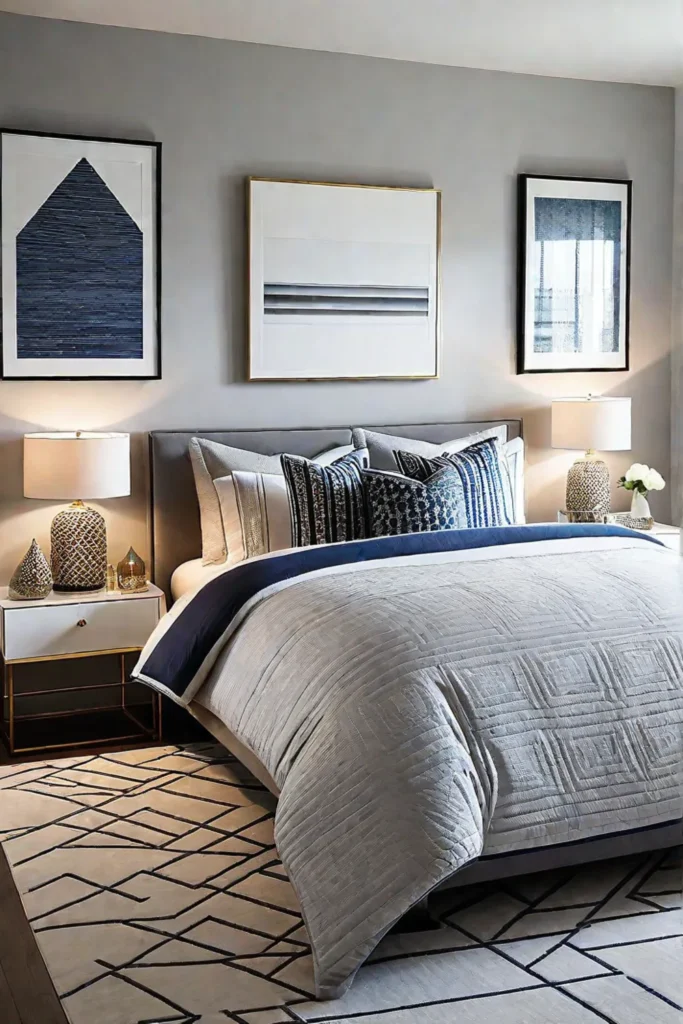
Natural textures are essential for adding depth and character to your minimalist bedroom. Choose wisely, and let these elements breathe life into your sanctuary, creating a space reflecting your unique personality and love for the natural world.
How does the art of textile layering transform a minimalist bedroom? Let’s explore the possibilities in our next section.
Master the Art of Textile Layering
Have you ever felt like your minimalist bedroom was missing something? The art of textile layering is the secret to adding depth and warmth. Combining different fabrics, textures, and patterns creates a cozy and inviting atmosphere while maintaining a clean, uncluttered look.
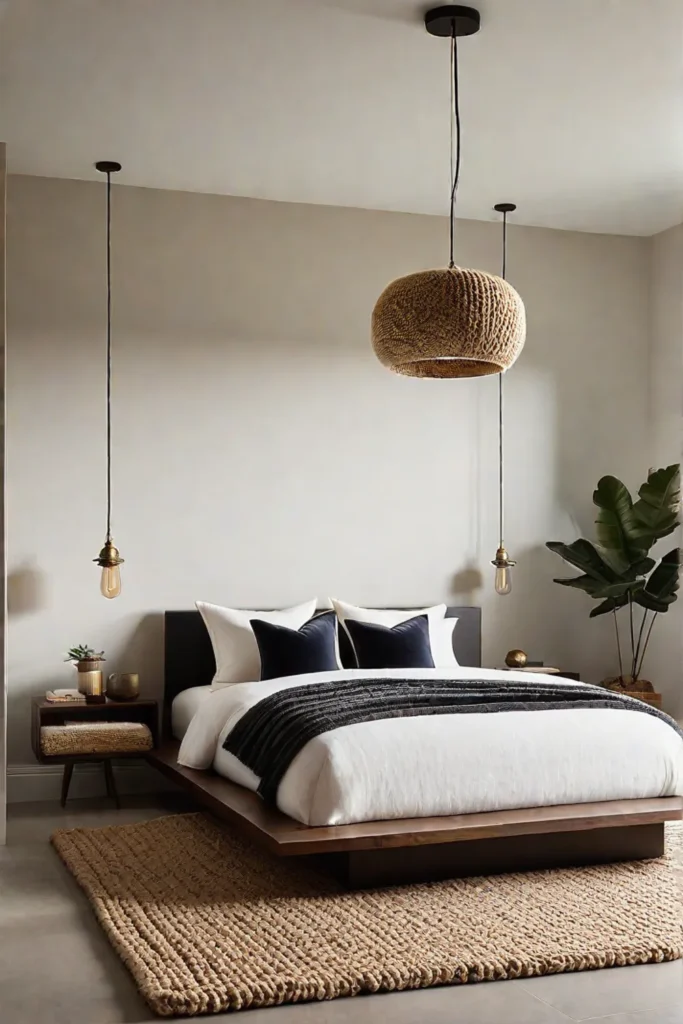
Bedding Bliss: Layering for Comfort and Style
Imagine sinking into a bed that perfectly blends luxury and coziness. Start with crisp, high-quality sheets in a neutral hue, then layer on a plush duvet or comforter. Top it off with a textured throw blanket, like a chunky knit or a soft cable knit, and add a few accent pillows in complementary colors or patterns. This simple layering technique looks stunning and provides the ultimate comfort for a restful night’s sleep.
Window Treatments: Framing Your View with Texture
Windows are often overlooked regarding texture, but they’re a prime opportunity to add depth and dimension to your space. Combine sheer curtains with heavier drapes or bamboo blinds for a layered look that adds visual interest and allows you to control the amount of natural light entering the room. Sheer curtains can soften the space, while heavier drapes provide privacy and insulation.
Throws and Pillows: Adding Personality and Warmth
Throws and pillows are the cherry on top of your textile layering masterpiece. These small accents allow you to introduce pops of color, pattern, and texture without overwhelming the minimalist aesthetic. Opt for a plush velvet throw draped over the end of your bed or a cozy faux fur pillow on your reading nook. These little touches add personality and warmth to your space, making it feel inviting.
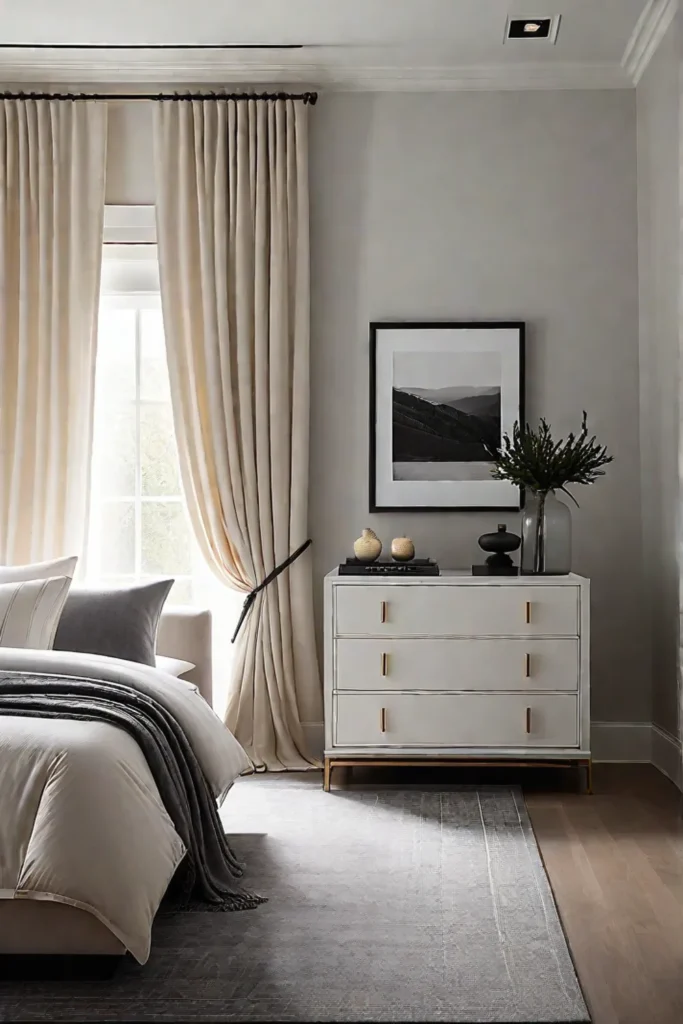
Textile layering is a powerful tool for creating a cozy, inviting, minimalist bedroom. Combining different fabrics, textures, and patterns allows you to add depth and dimension without sacrificing the clean, uncluttered look you love. So, what are you waiting for? Start experimenting and unleash your inner textile artist!
What are the best fabric combinations for layering in a minimalist bedroom? I recommend starting with a neutral base, like crisp cotton or linen sheets, and then layering on different textures, like chunky knits, soft velvets, and cozy wools. Don’t be afraid to mix and match – the contrast creates visual interest.
How can you use textile layering to create a focal point in the room? One way is to use a statement piece, like a boldly patterned throw or a plush velvet headboard. You can also draw the eye with a layered window treatment, combining sheer curtains with heavier drapes or bamboo blinds.
Remember, the key to successful textile layering is finding the right balance between fabrics, textures, and colors. Experiment, have fun, and create a space that’s uniquely yours!
Elevate Your Space with Visual Interest
As a minimalist, you might think creating visual interest in your bedroom would be challenging. But fear not, my friends! Introducing texture is the secret sauce that will take your space from flat to fabulous.
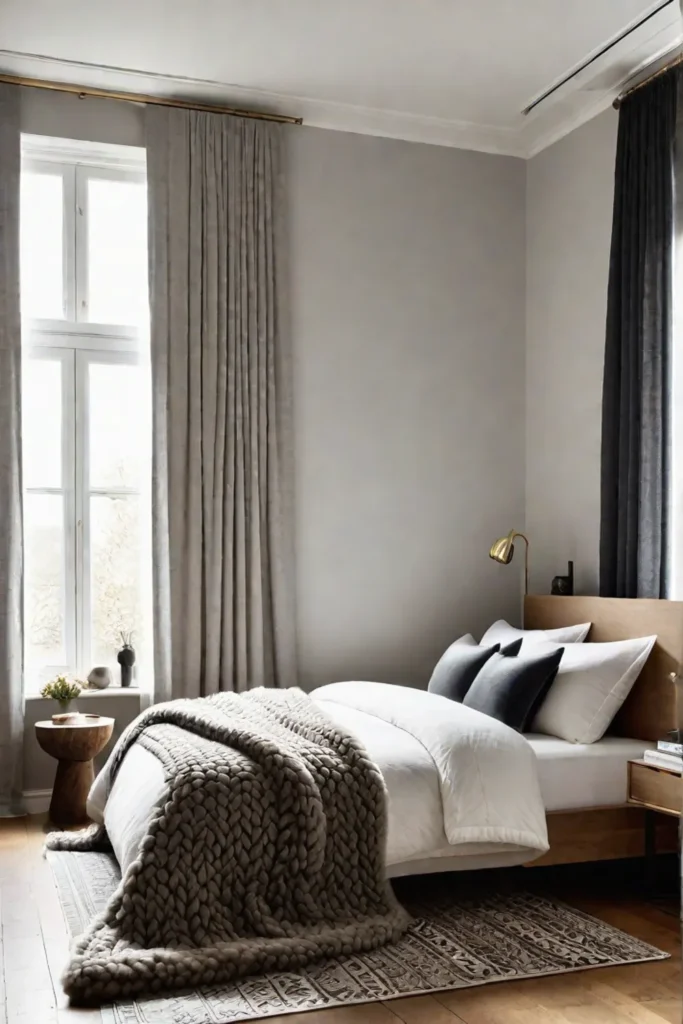
The Power of Contrast: Playing with Light and Shadow
Contrast is the spice of life, and it’s no different in interior design. By pairing smooth and rough textures, you’ll create a delightful dance of light and shadow that adds depth and dimension to your space. For example, pair a sleek, white wall with a rustic wooden headboard for a striking contrast that will make your minimalist heart sing.
Geometric Patterns: Adding Subtle Intrigue
Who says minimalism has to be boring? Introduce a subtle geometric pattern through a rug, wallpaper, or decorative objects to add a touch of intrigue without overwhelming the space. The key is to keep it simple and let the pattern be a supporting player, not the show’s star.
Metallic Accents: A Touch of Glamour
Nothing says “sophisticated minimalist” quite like a metallic accent. Whether it’s a shiny brass lamp, a sleek silver picture frame, or a brushed gold decorative bowl, these touches of glamour will elevate your space and add a luxurious vibe without cluttering your sanctuary.
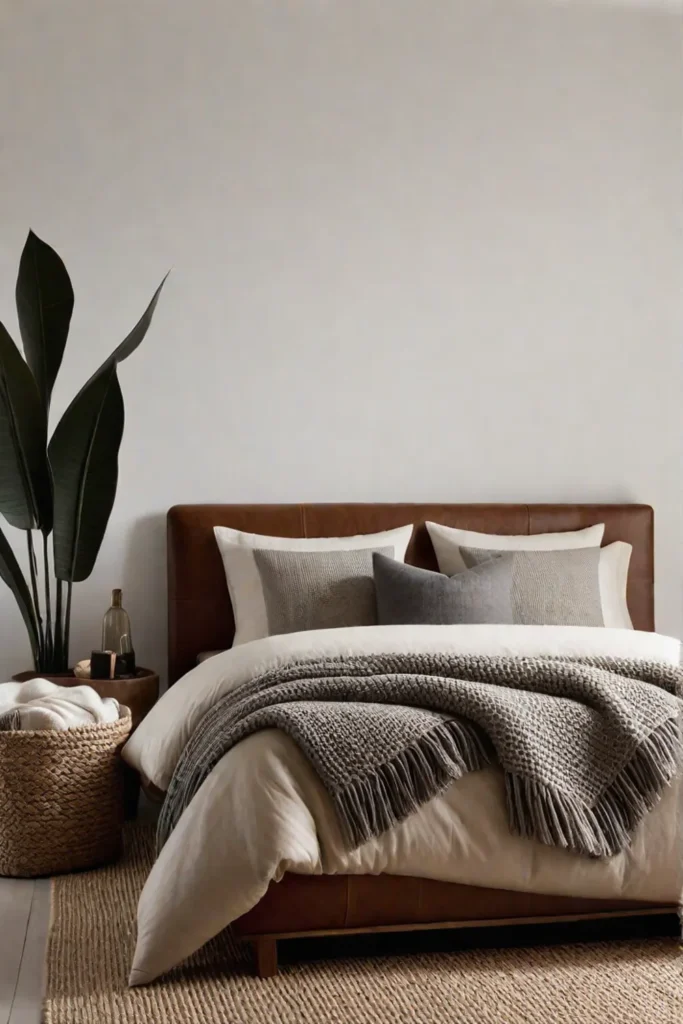
How can you use texture to create a sense of movement in a minimalist bedroom? Think about layering different textures, like a chunky knit throw draped over a smooth linen duvet. This interplay of textures will create a subtle movement that engages the eye.
Are you ready to take your minimalist bedroom to the next level? Incorporating contrast, geometric patterns, and metallic accents will create a visually interesting space that feels calming and dynamic.
While visual interest is crucial, balancing texture with minimalist principles is equally important. How can you achieve this harmonious balance? Let’s explore this in the next section.
Balancing Texture with Minimalist Principles
Have you ever noticed how a simple change in texture can transform the entire ambiance of a room? In a minimalist bedroom, where simplicity reigns supreme, texture can add depth and character without compromising the clean, uncluttered aesthetic.
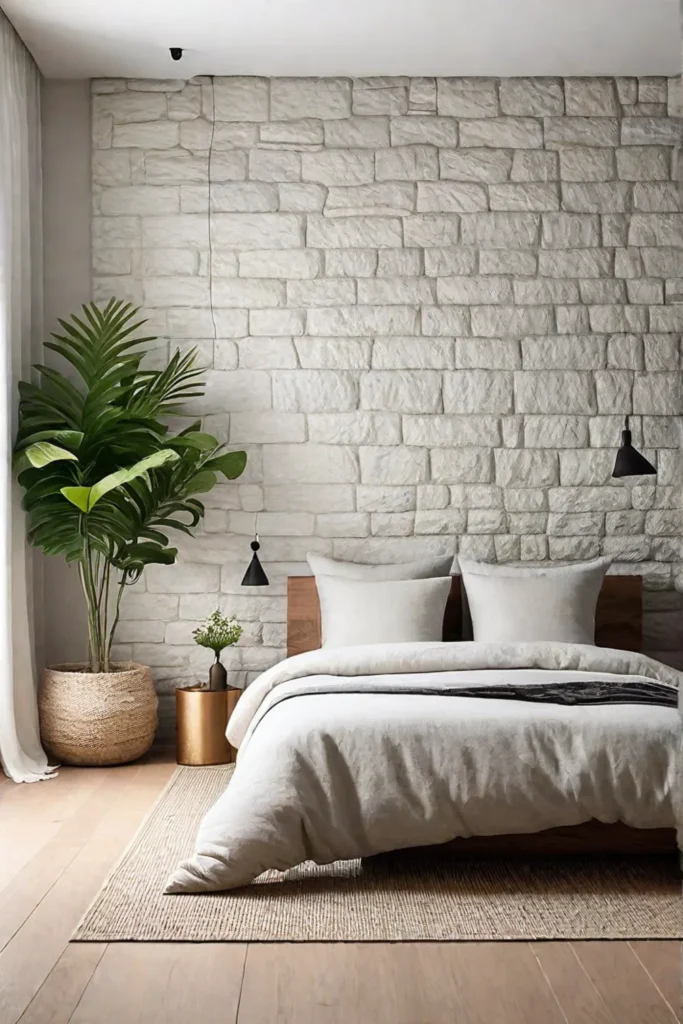
Editing is Key: Choosing Textures with Purpose
As a minimalist, I understand the importance of intentionality in every design decision. When it comes to incorporating texture, less is often more. Too many different textures can create a sense of chaos rather than harmony. The key is to choose a few key textures that you truly love and use them strategically throughout the space.
The Power of Repetition: Creating a Cohesive Look
Repetition is a powerful tool in minimalist design, and it also applies to texture. Repeating certain textures throughout the room creates a sense of unity and cohesion. For instance, you could incorporate a wooden headboard and side table or use the same linen fabric for your bedding and curtains. This repetition adds depth while maintaining a cohesive look.
Scale and Proportion: Maintaining Balance
When introducing textured elements into a minimalist bedroom, it’s crucial to consider scale and proportion. The size of the textured elements should be appropriate for the room, ensuring a balanced and harmonious overall aesthetic. A large, chunky knit throw might overwhelm a small space, while a delicate lace accent might get lost in a larger room.
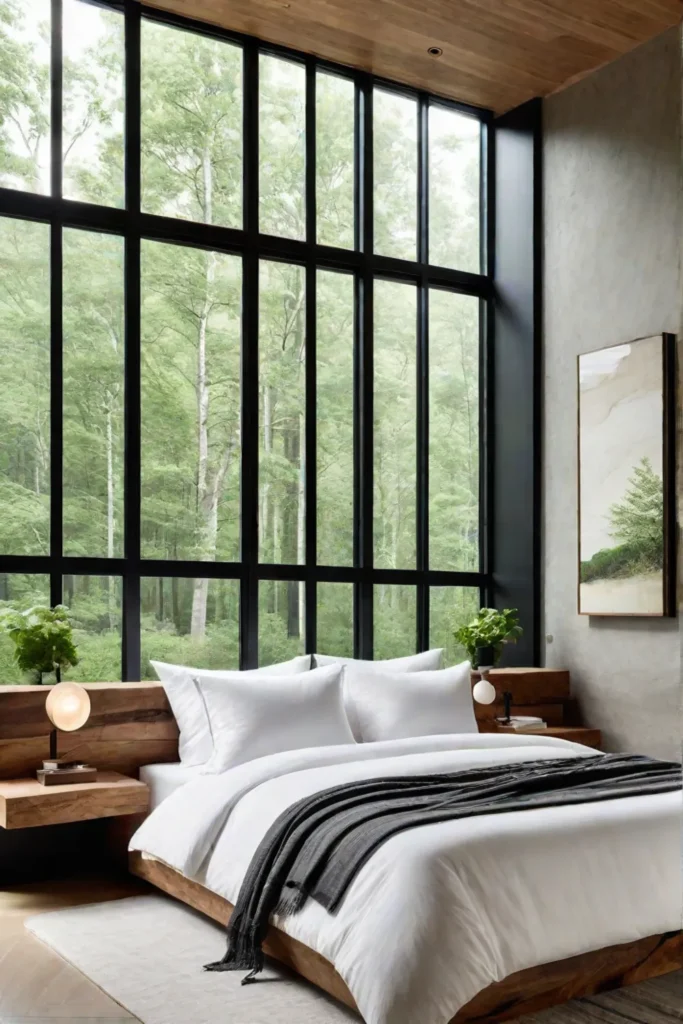
How can you avoid common mistakes when incorporating texture into a minimalist space? The key is to balance adding depth and maintaining a clean, uncluttered aesthetic. Avoid introducing too many different textures, as this can create a sense of chaos. Instead, focus on quality over quantity and choose textures that enhance the overall aesthetic without overwhelming the space.
Pursuing balance is at the heart of minimalist design, and this principle extends to using texture in your bedroom. By carefully selecting and strategically incorporating textures, you can create a space that exudes simplicity and depth, offering a serene and harmonious retreat.
Are you ready to explore the world of texture in your minimalist bedroom? Remember, the key takeaways are to choose textures with purpose, embrace the power of repetition, and maintain balance through scale and proportion. With these principles in mind, you can craft a space that embodies the essence of minimalism while adding a touch of warmth and character.

Conclusion
In pursuing a minimalist bedroom that resonates with bimplicity and warmth, the strategic incorporation of texture becomes a true art form. By embracing the principles of intentionality, repetition, and balance, you can craft a space that exudes depth and character while maintaining a clean, uncluttered aesthetic.
Remember, texture is not merely a decorative element; it is a powerful tool that can transform a room from a blank canvas into a harmonious sanctuary. So, embrace the beauty of natural elements, experiment with layering, and let your minimalist haven reflect your unique style and appreciation for the tactile world around you.

